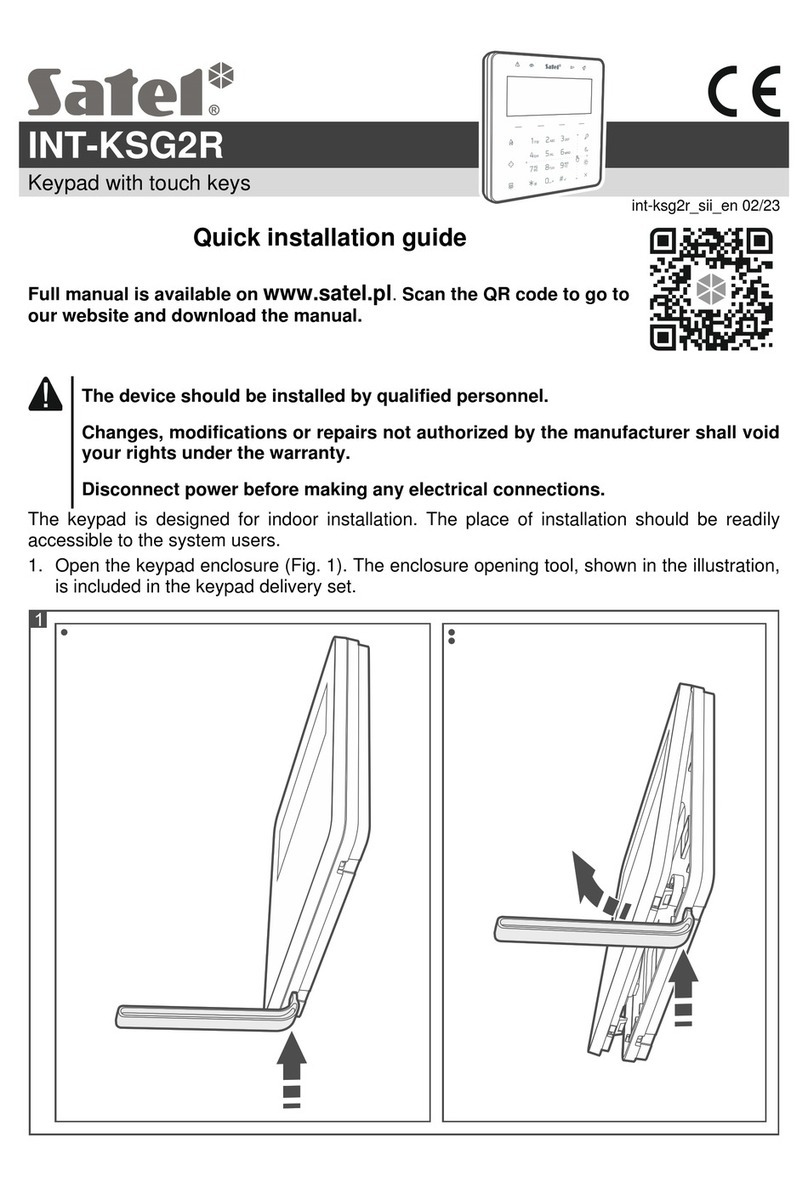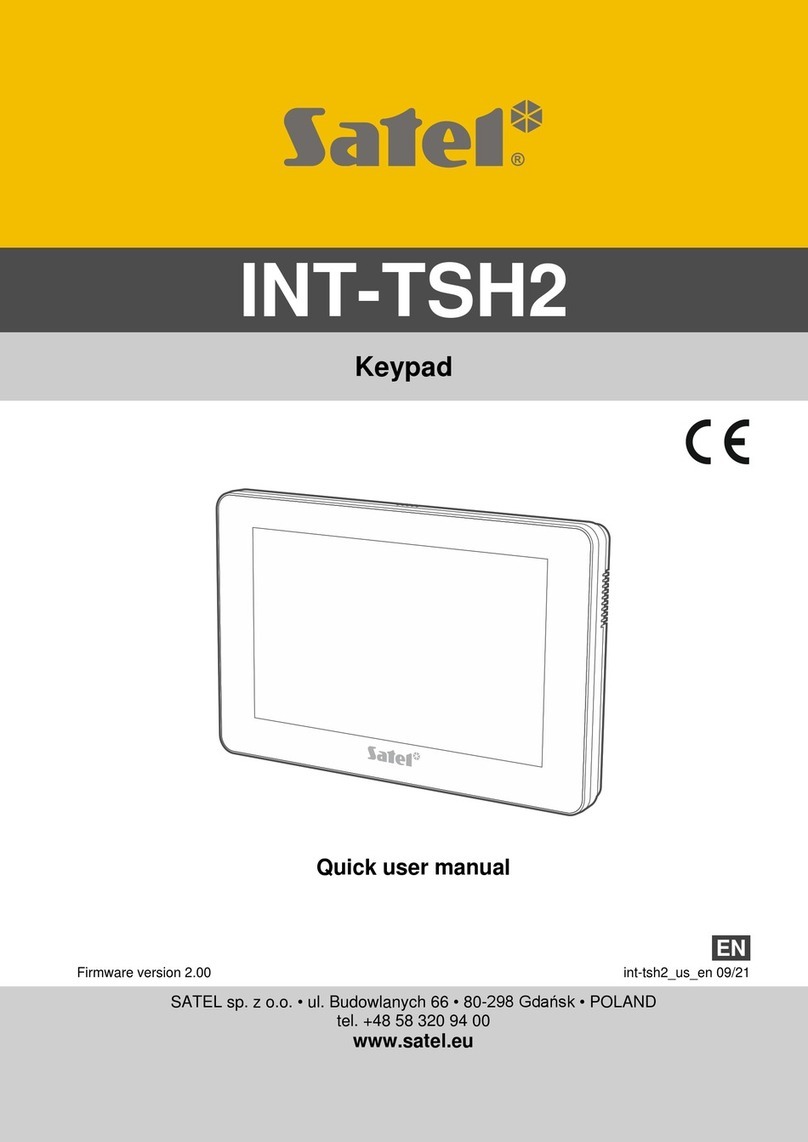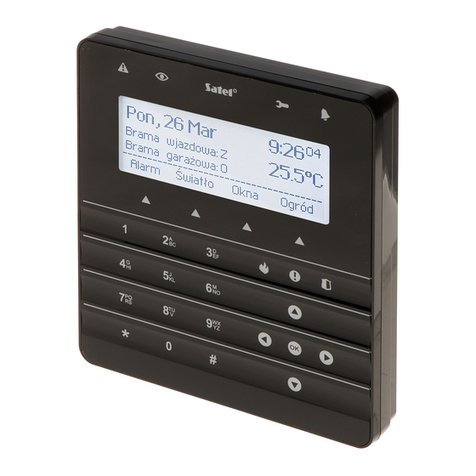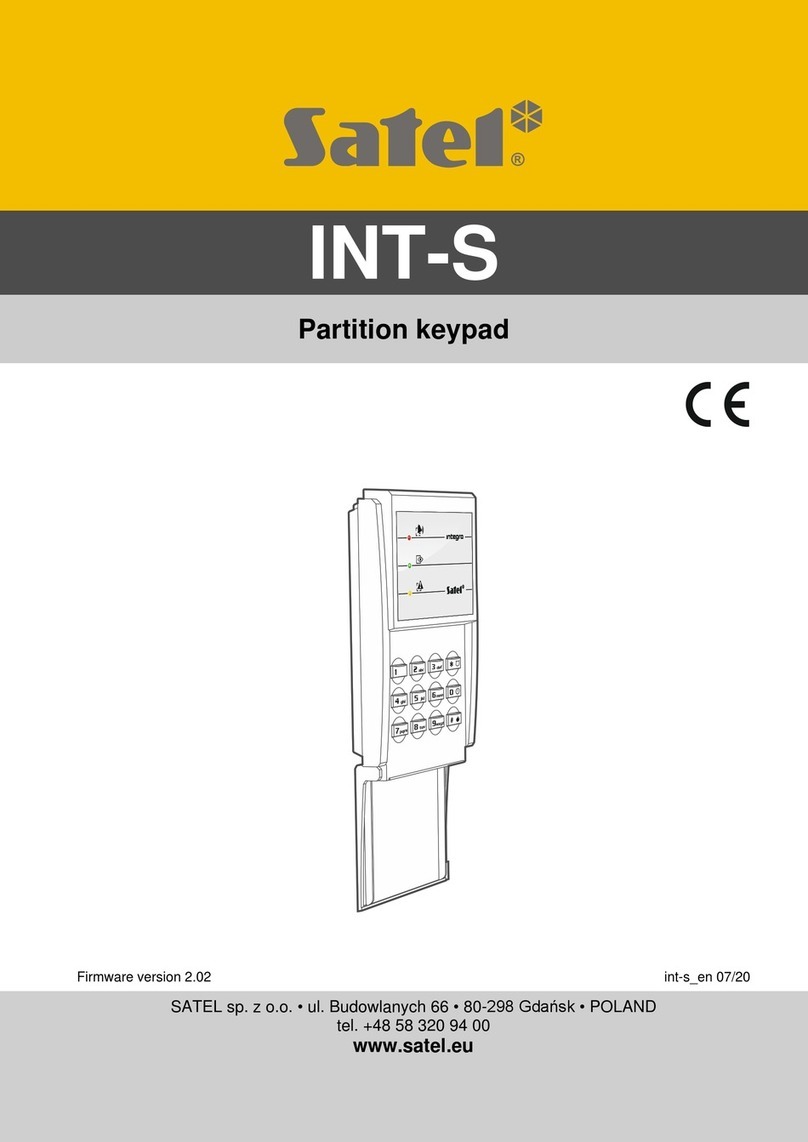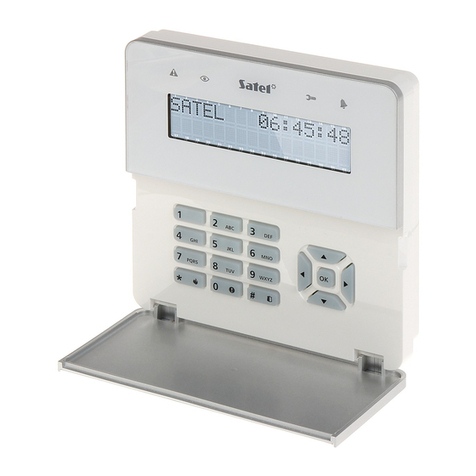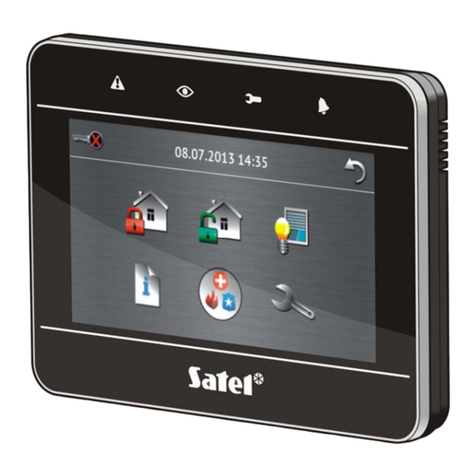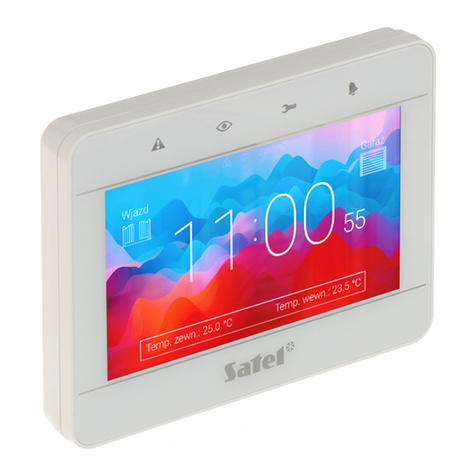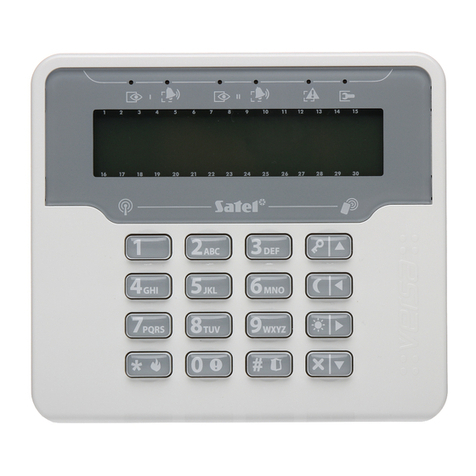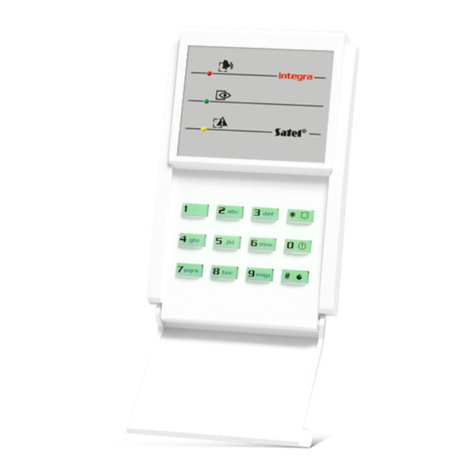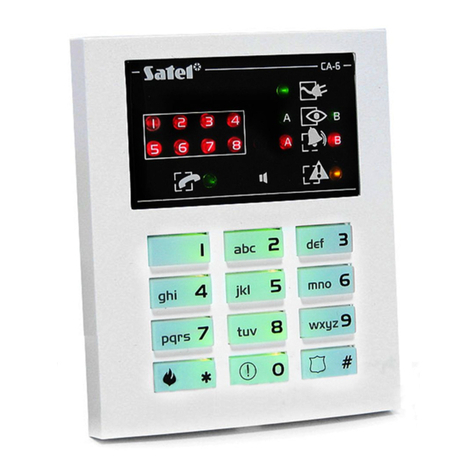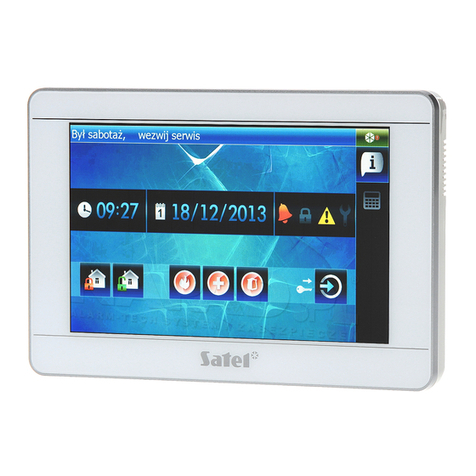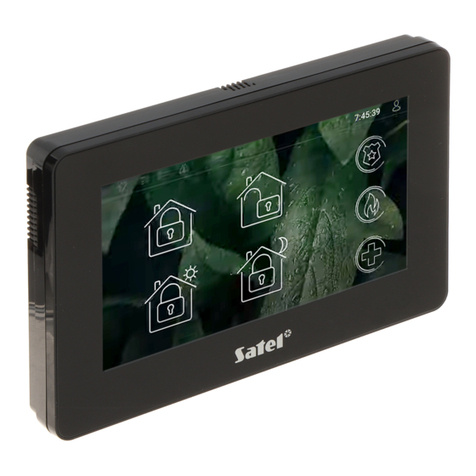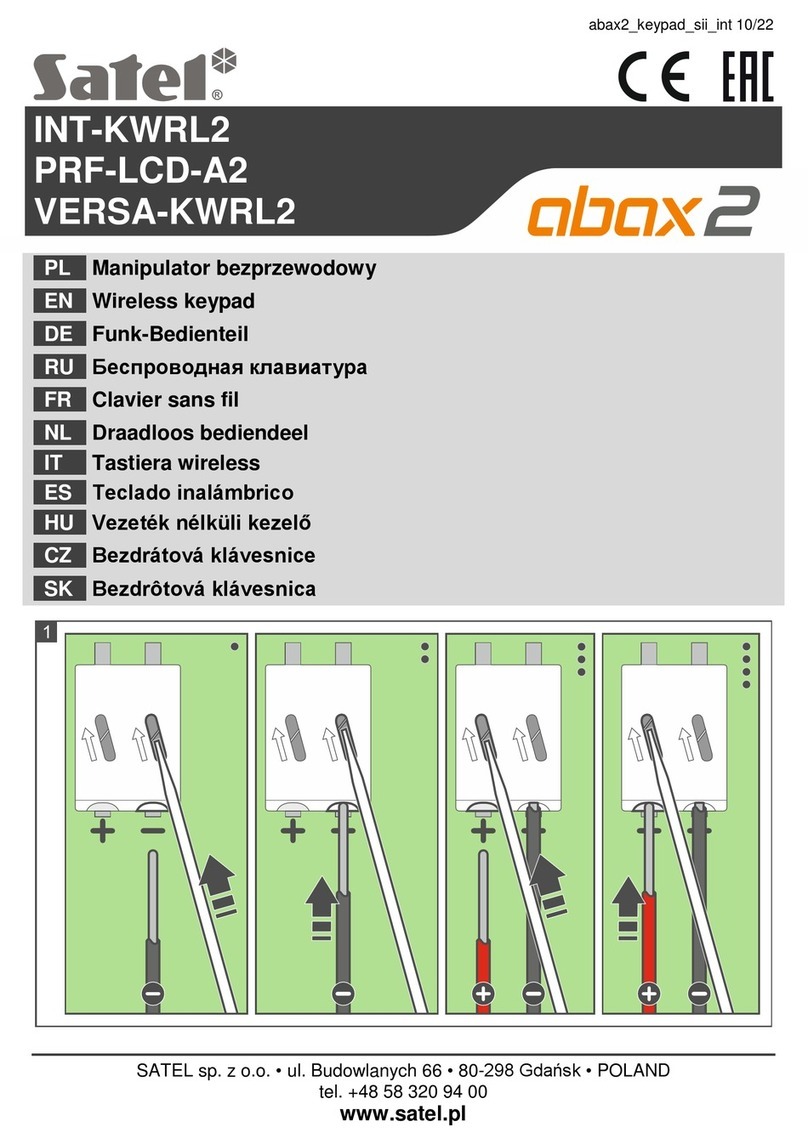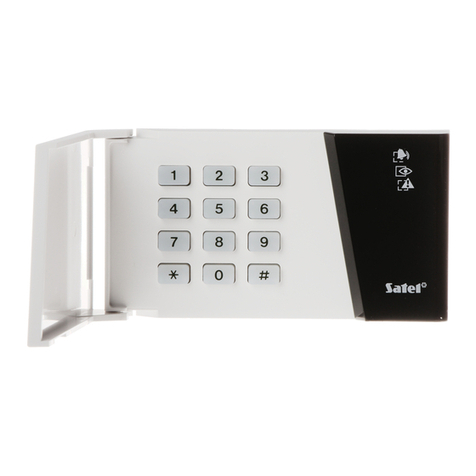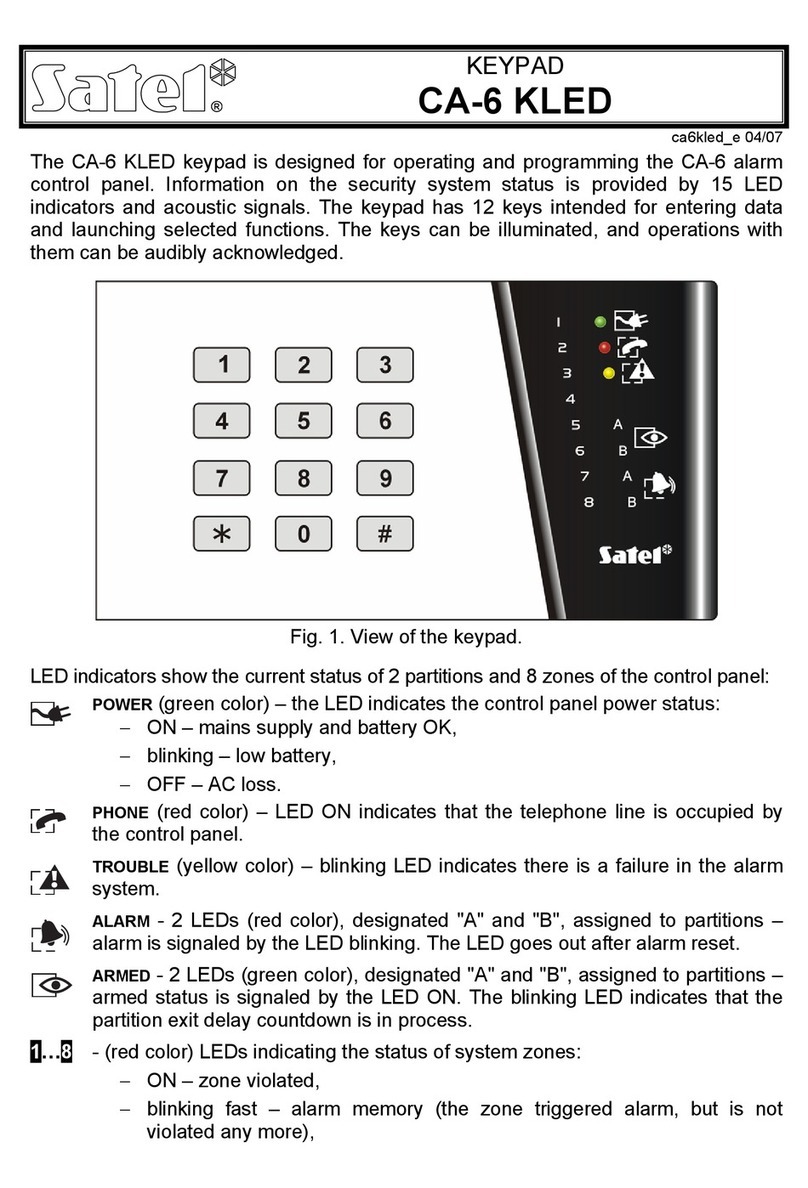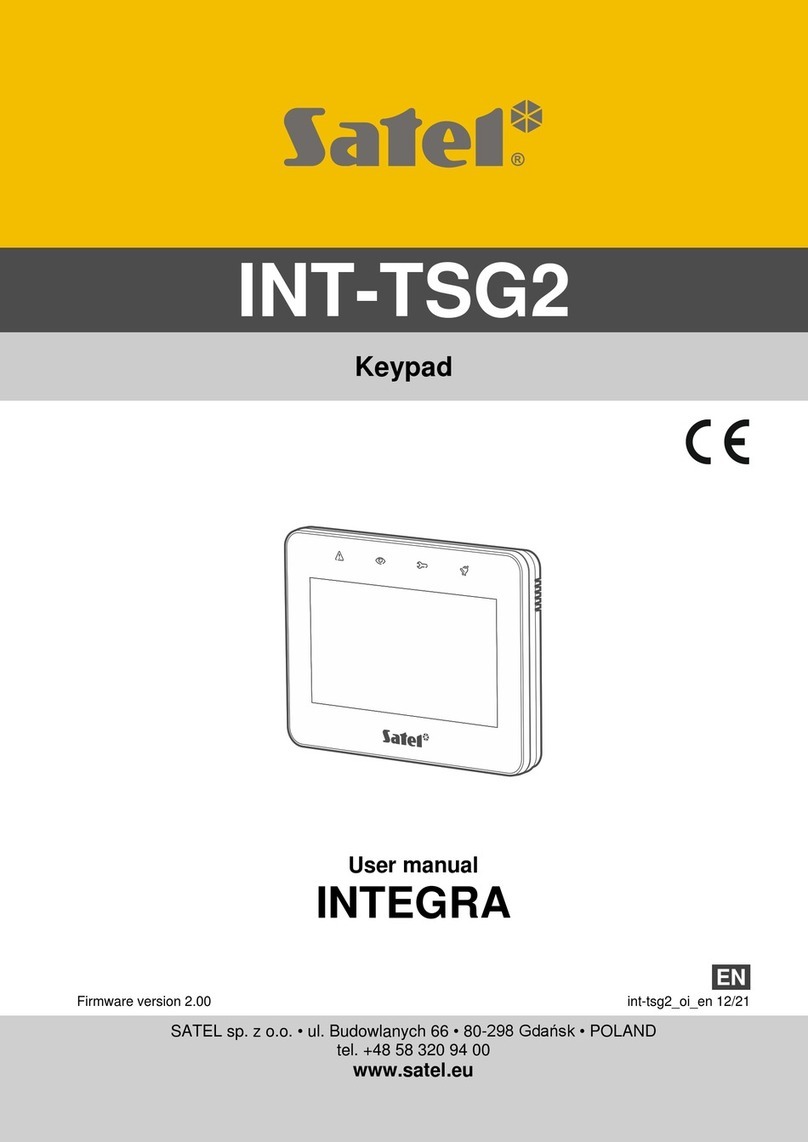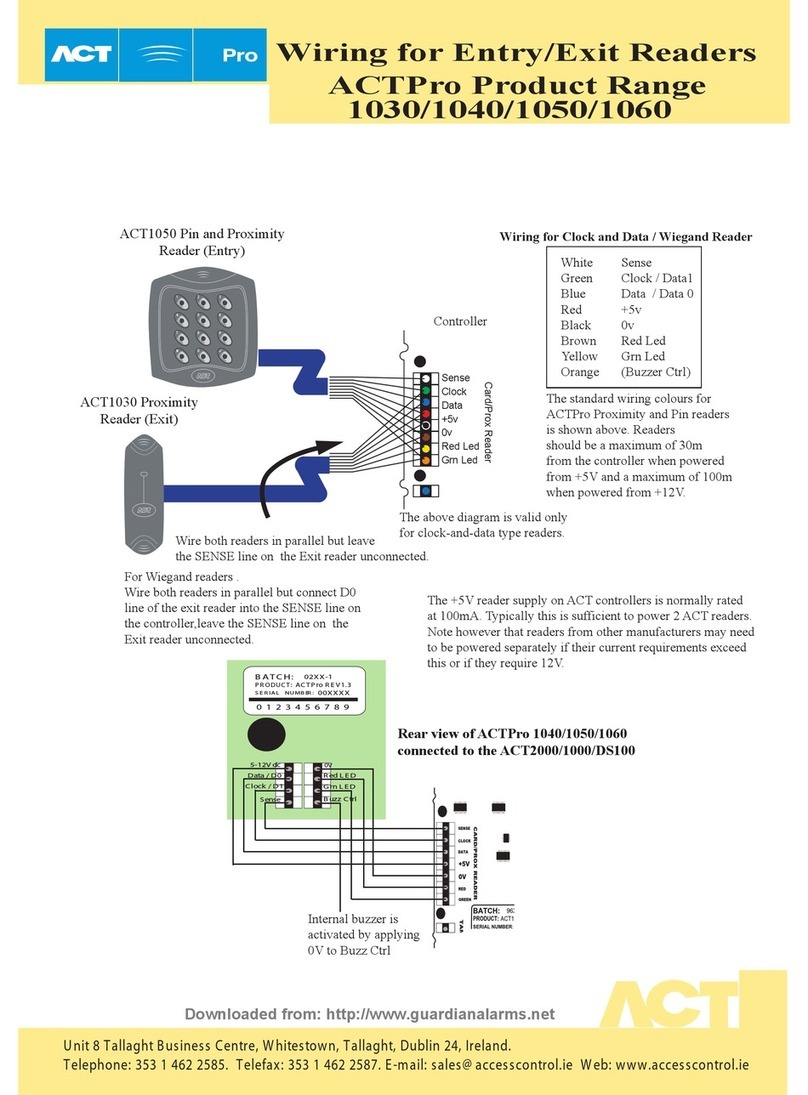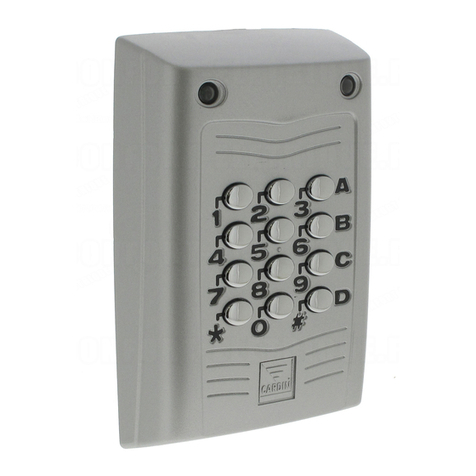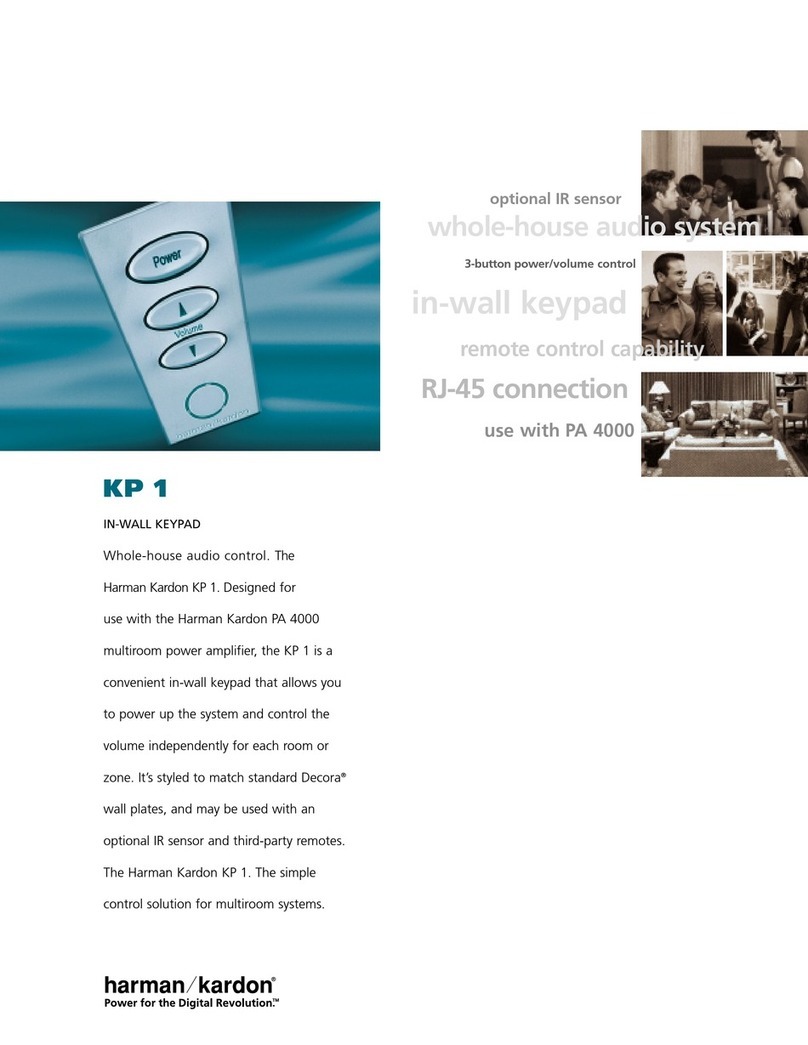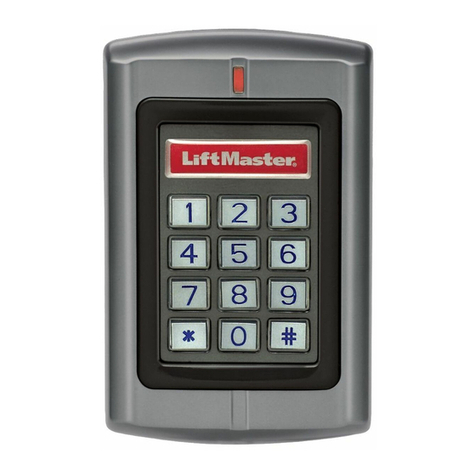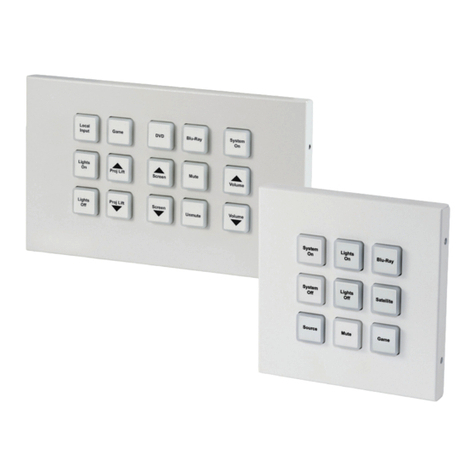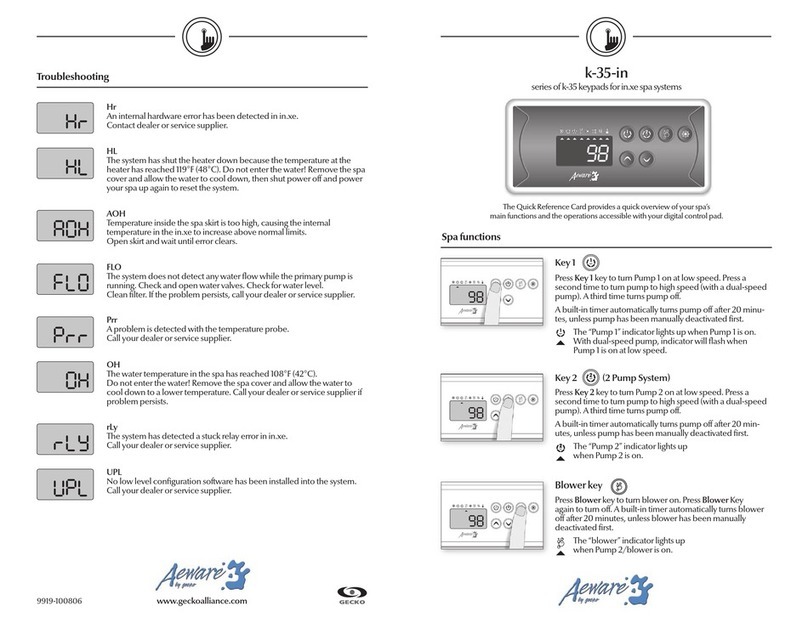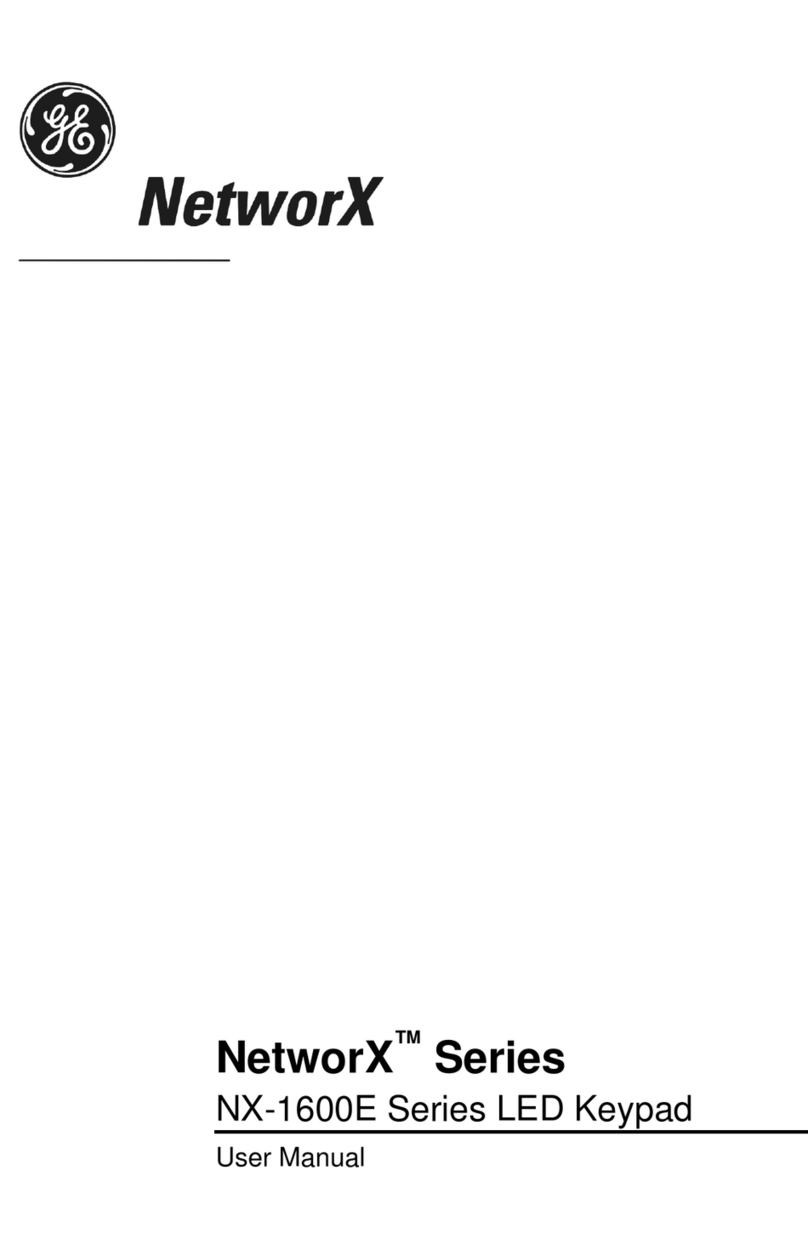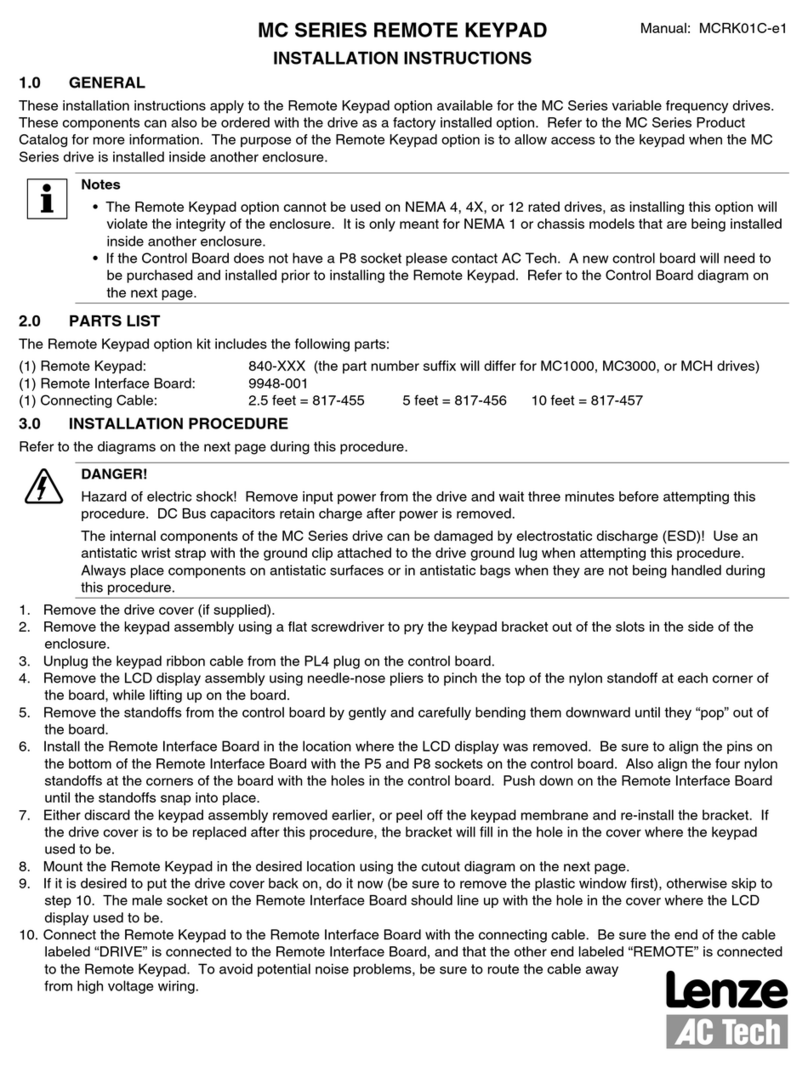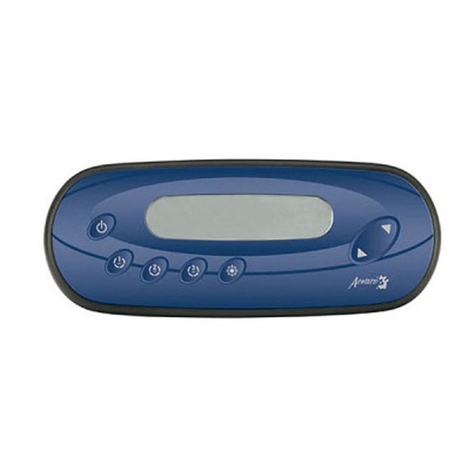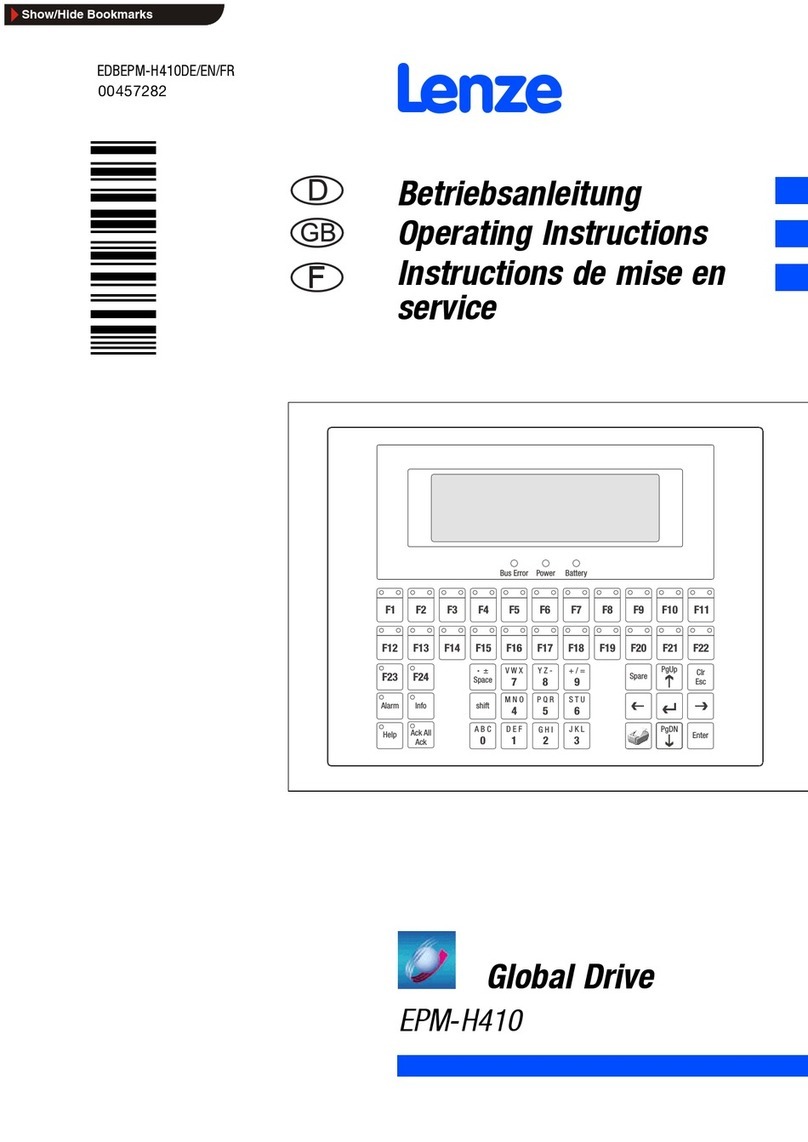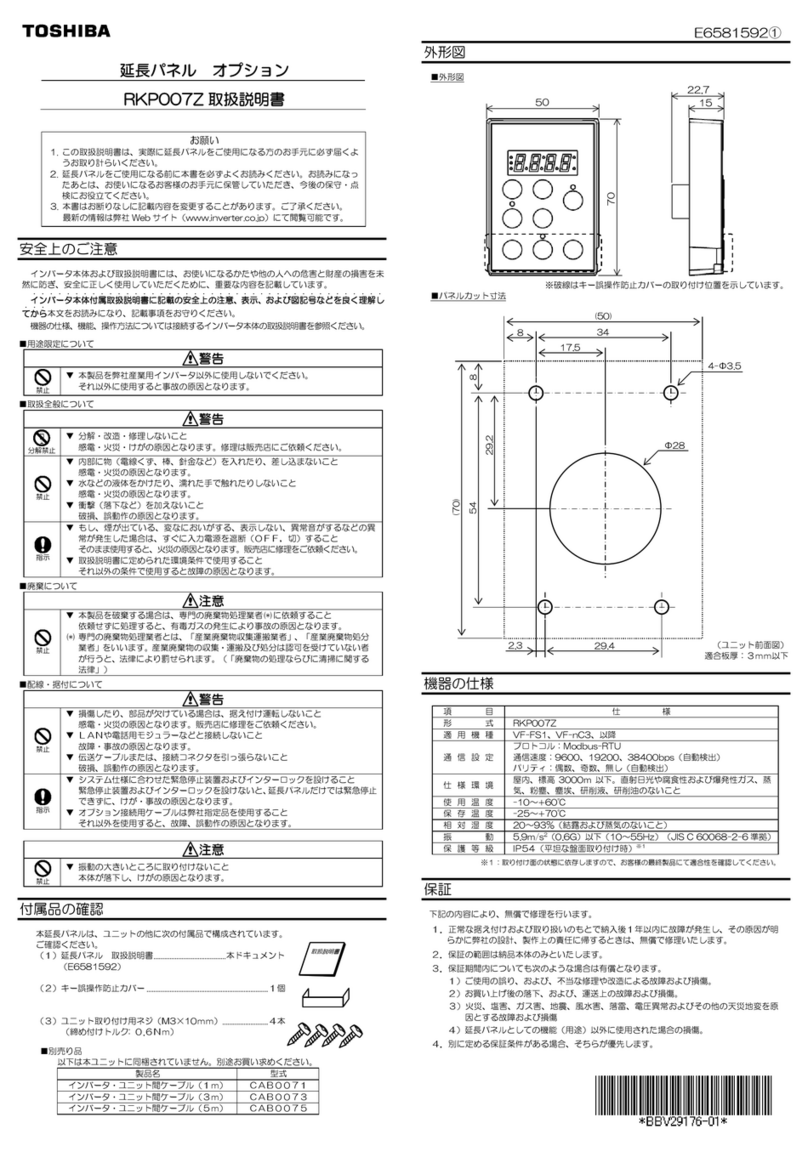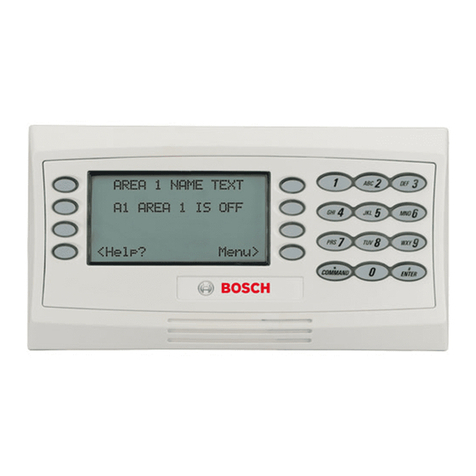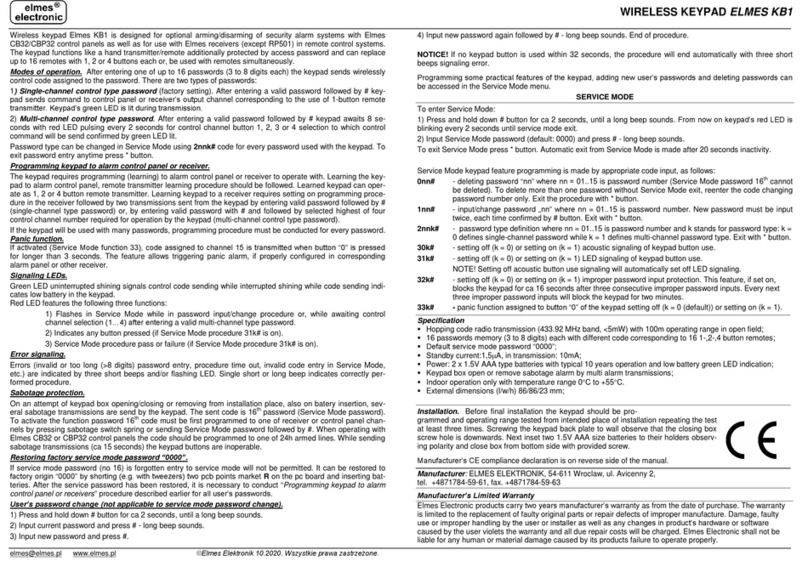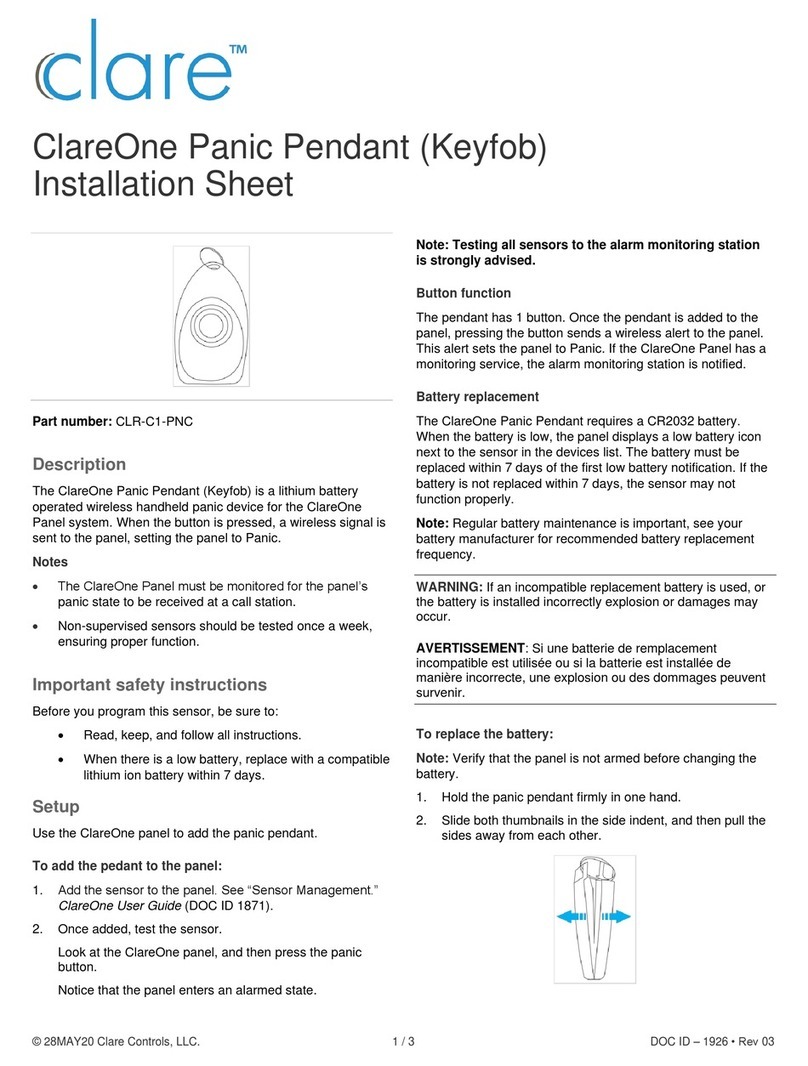2Partition keypad CA-64 S SATEL
>CODE 9control of relay located at the module board (for example, opening of the
electromagnetic door lock).
There is a possibility to program the partition (service setting) to be opened or closed after
entering two different codes. In this case, after CODE is entered and key # is pressed, the
LEDs ARMED and TROUBLE (green and yellow), start to blink, and the control panel waits for
entering the second code. The second CODE may be typed either at the same keypad or at
another one (also, at LCD keypad), which is assigned for this partition. Pressing the key #
after the second code arms and disarms in the partition.
The possibility to change the code by the user is an additional function of the keypad (service
setting).
The user, who wants to start functions mentioned above, must be authorised to use this keypad
(authorisation is given by alarm system administrator or installer). Additionally, in order to use
the first of those functions, the user must have access to the partition in question and adequate
authorisation given by the system administrator or, by the person, who entered the user’s code
to the system.
For example: The user, who is authorised to operate a partition keypad, but has not access to
a particular partition or has access but no right to disarm the partition, can operate the relay of
this keypad by entering the CODE and pressing key 9only when the partition is disarmed.
When this partition is disarmed and the keypad controls the relay, entering the CODE and
pressing key 9will cause disarming and operation of the relay only if the partition isn’t
temporary bypassed, and the user has the right to disarm and use this keypad.
There is a possibility to control various equipment with the control panel (for example, switching
off the lighting, starting air-conditioning, etc.). The installer should inform the user, which
equipment may be operated by means of the given keypad.
Control functions are executed by typing the special CODE into the keypad (for which the user
type has been selected as “monostable output” or “bistable output”) and pressing the key #.
When the erratic code is typed three times, the alarm may be activated (service setting).
Code change by the user is carried out as follows:
Keep pressed for a longer time (approximately 3 seconds) the key with digit 1(LEDs
ALARM and ARMED – red and green – start to blink alternately).
Type old CODE and press # (LEDs: ALARM and TROUBLE – red and yellow - start to
blink alternately).
Type new CODE and press # (LEDs stop blinking and the module generates
confirmation signal of the function executed).
The control panel may refuse changing the code - it is signalled with two long sounds.
Information on the refusal of code changing is available in the "User’s Manual for CA-64"
(ÆOperation of Control Panel CA-64, ÆPartition Keypad).
The system installer may render accessible other functions from the partition keypad, for
which code entering is not required:
>0 # quick partition arming (function called by pressing two keys: 0 and # in
sequence).
and functions of triggering special alarms:
9# panic alarm,
90 auxiliary alarm (for example, calling for medical aid),
99fire alarm.
The last three functions are started by longer keeping depressed (for approximately 3 seconds)
the key described above.
